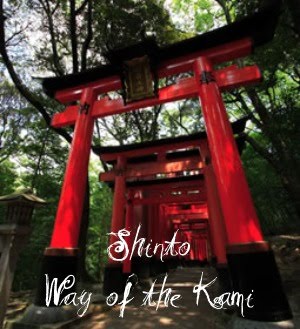Shinto is a polytheistic religion, venerating a vast pantheon of kami (gods or spirits) which range from the local deities of mountains or streams to the sun goddess Amaterasu. Natural phenomena and particular places are personified as kami, dead statesmen or other notables could be deified as kami, families or craft traditions revered their forefathers as kami, the reigning emperor was long regarded as a living kami. A kami could loosely be termed the "spirit" of virtually any aspect of existence possessing its own discrete identity and vital force (tama). Japan is traditionally known as "the land of 8 million kami". The practice of Shinto consists chiefly of worshipping, propitiating, and otherwise dealing with the kami.
Shinto first arose in a preliterate culture as a religion of practice rather than creed, and practice remains fundamental to it. Two types of practice predominate: honouring the kami through prayer and offerings, and averting their wrath by cleansing oneself of impurity.
Food offerings-especially rice, sake, fish, vegetables, and fruit-and symbolic offerings of pine branches with white paper strips attached usually feature in the more important Shinto ceremonies. These are often associated with the seasonal cycles, reflecting Shinto's roots in an agricultural society. The stages of human life are also marked by Shinto ceremonies: a baby's first visit to its tutelary kami soon after its birth; the Shichi-go-san (Seven-Five-Three) festival on November 15 in which 5-year-old boys and 3- and 7-year-old girls visit shrines to pray for good health; and the traditional wedding ceremony. Any new enterprise requiring good fortune, such as a supermarket's sales drive, may call for prayers at a shrine. A shrine's Annual Festival (Rei-sai) is often marked by a riotous parade in which a portable shrine, the mikoshi, is carried shoulder-high round the parish accompanied by shouting and singing.
Shinto traditionally emphasizes purity, and regards death, disease, blood, and filth as obnoxious to the kami. Elaborate rituals are prescribed to purge these exhaustively specified contaminations, known as kegare.

No comments:
Post a Comment